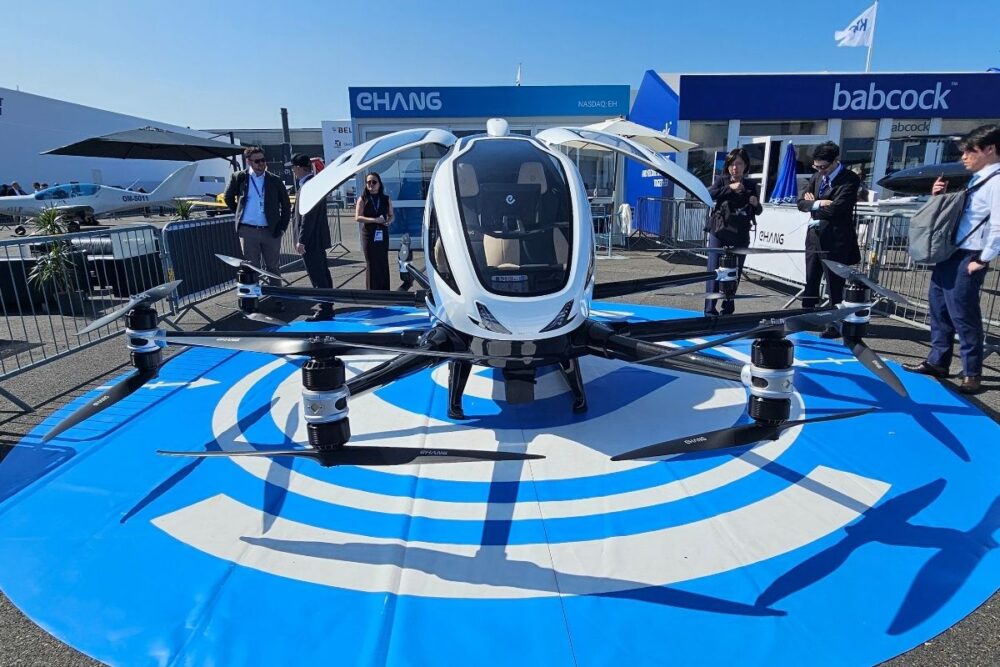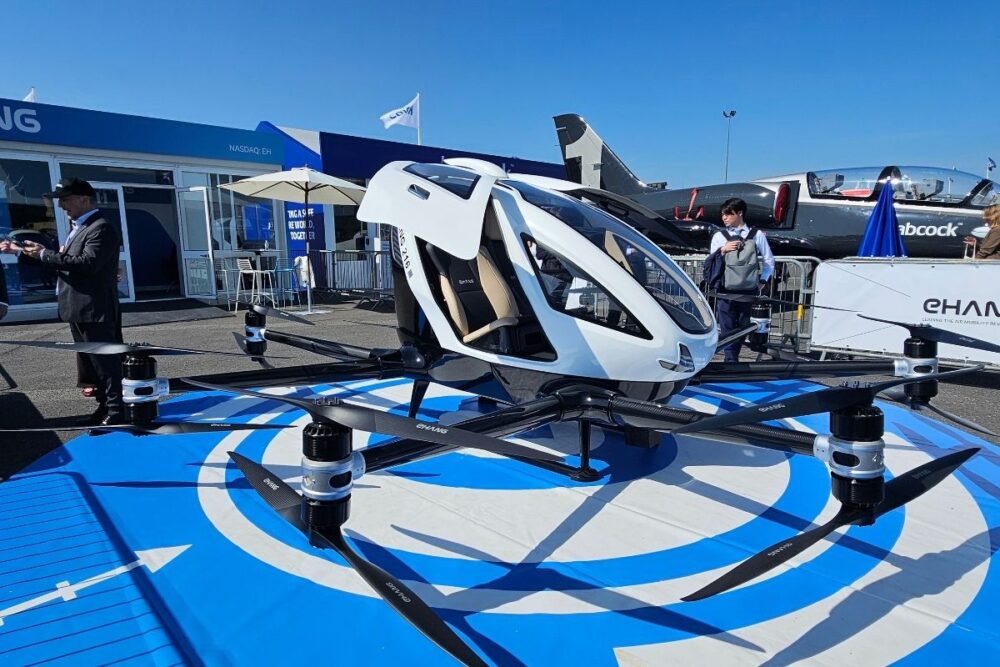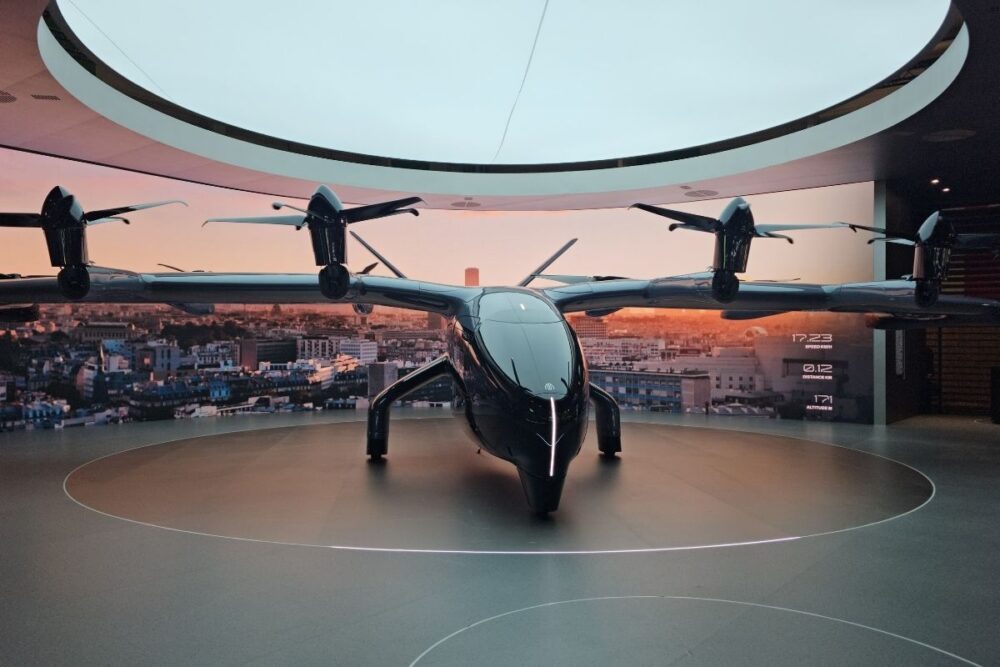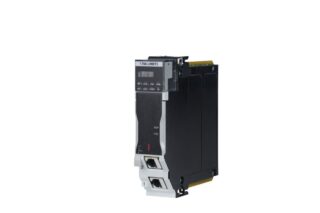Flying taxis, once a futuristic fantasy, are rapidly becoming a reality—and a promising answer to urban gridlock. At this year’s Paris Air Show in Le Bourget, electric vertical takeoff and landing aircraft (eVTOLs) took center stage. Industry leaders like China’s EHang and U.S.-based Archer Aviation unveiled their latest innovations, highlighting how clean, quiet, and autonomous air mobility could soon reshape city travel. Among the breakthroughs: the world’s first certified autonomous air taxi—made in China and already flying.
Just a few years ago, the idea of hailing a flying taxi with your smartphone felt like science fiction. Today, it’s within reach. Both companies are either already operating or planning commercial launches in select cities as early as this year.
EHang: Fully Autonomous, Already Flying in China
While most electric air taxis are still in the prototype phase, EHang, a Chinese urban air mobility pioneer, is already flying passengers—with no pilot onboard.
The company has achieved several industry firsts, including the world’s first certified autonomous eVTOL (electric vertical takeoff and landing aircraft) and the launch of commercial operations in China. According to Ricardo Ortega Recio, Director at EHang, this marks a major milestone for the entire sector.
“We are the first company to be granted both the type certificate and the air operator certificate by the Civil Aviation Authority of China,” he says. “This allows us to transport people commercially—and it’s already happening.”
Unlike many competitors that require a pilot onboard, EHang’s aircraft—such as the EH216—is completely autonomous. Passengers simply board the craft at one of EHang’s urban vertiports, either by booking through an app or buying a ticket on-site.
“I’ve flown in one myself,” Ortega Recio says. “We’ve deployed several urban mobility hubs across China, and I visited them on business trips. It’s a real, operational service.”
So far, EHang has completed over 60,000 autonomous flights in 19 countries, making it the most experienced operator in this still-emerging sector.
To support its autonomous fleet, EHang is building a national network of vertiports—the aviation equivalent of bus stops for the sky. These ground-based hubs are designed for quick takeoff and landing in dense urban environments.
“It’s like a metro or bus network in the air,” Ortega Recio explains. “Passengers can fly from one connected vertiport to another. It’s fast, clean, and increasingly accessible.”
While many urban air mobility players still focus on test flights or future regulatory hurdles, EHang is already providing tourism and commuter flights within China.
One key advantage: China’s dominance in the electric vehicle and battery sectors. As Ortega Recio points out, this makes it easier to scale eVTOL services.
“China is already leading in electric cars and battery technology,” he says. “We’ve even started testing solid-state batteries to increase flight range and autonomy.”
He adds that EHang is working within China’s new “low-altitude economy” framework, which promotes business models built around low-level airspace—typically 100 to 120 meters above ground.



Key Advantages of EHang:
- Fully autonomous flight
- Certified by China’s Civil Aviation Authority
- Solid-state battery tested for extended range
- Extensive real-world flight experience
“From JFK to Manhattan in 5 Minutes”: Archer Aviation Prepares to Launch Its Electric Air Taxi
Across the Atlantic, Archer Aviation is gearing up to launch its Midnight air taxi—a sleek, 5-seat eVTOL aimed at short, rapid commutes. Midnight promises quiet, affordable, and safe transport in major cities—without the noise and cost of traditional helicopters.
“You can imagine going from the center of Paris to Charles de Gaulle or from JFK to Manhattan in just 5 to 10 minutes,” says Nikhil Goel, Archer’s COO. “And for the same price as an Uber.”
Midnight is a five-seat eVTOL (electric vertical takeoff and landing) designed with large wings for quiet gliding, making it not only efficient but also ideal for urban noise reduction
It’s not just a futuristic prototype. Archer plans to launch commercial operations this year, starting in Abu Dhabi, a region with supportive regulations and strong infrastructure for emerging aviation tech.
“The UAE has been a fantastic partner,” says Goel. “It’s our first launch market, but we’re also planning for the U.S., Japan, India, and more.”
Midnight is designed to take off and land on vertiports—compact landing pads on rooftops, parking garages, and other underutilized urban spaces. This model allows the service to integrate into city centers without requiring massive new infrastructure.
“Vertiports are where this whole ecosystem really comes to life,” Goel explains. “Think heliports but cleaner, quieter, and easier to deploy.”
Unlike many startups in the space, Archer is very well-capitalized. The company recently raised $1 billion, bringing its total funding to over $3 billion.
“It’s about more than the tech,” Goel says. “We’ve built an international network of partners and investors to ensure we can actually scale and operate globally.”
While competitors like Volocopter and EHang focus on shorter or more autonomous routes, Archer is aiming for urban-suburban commutes, designed for speed, safety, and affordability.
“There are great designs out there,” Goel says. “What sets us apart is the scale of our partnerships, our funding, and our readiness to launch.”
Our video at Paris Air Show
Key Highlights of Archer:
- Can carry 4 passengers + 1 pilot
- Quiet, winged design enhances safety and efficiency
- Nearly $3 billion raised, with global partnerships including Safran in Europe
- Vertiports planned for rooftops and garages
A Market Poised for Takeoff
The eVTOL market is projected to surpass $30 billion by 2030, with applications ranging from air taxis and medical transport to logistics and tourism. While the U.S. and China lead in technological development, Europe is catching up with a growing number of partnerships and regulatory roadmaps.
But challenges remain. While regulatory complexity has made Europe a slower market to enter, Archer is actively engaged with EASA (European Union Aviation Safety Agency) and already has European suppliers, including aerospace giant Safran, which is providing critical components for the Midnight aircraft.
“We’re very interested in Europe,” says Goel. “We’ve built strong partnerships across the continent, and we’re working closely with regulators.”
Archer is also collaborating with defense partners like the UK’s ADRL, showing the flexibility of its aircraft for both civil and military applications.
Although the regulatory path in Europe is more complex, EHang is also actively engaging with EASA and authorities in countries like France.
“We’ve been working for months with the French Civil Aviation Authority and Groupe ADP,” Ortega Recio explains. “There are vertiports already planned for the Paris region. Full flights could happen sooner than expected.”
EHang also benefits from bilateral agreements between China and other countries, which may help fast-track certification for EHang’s autonomous aircraft outside of Asia.
Due to the challenges of incorporating new vertiports into existing Paris operations, a planned demo flight during the Paris Air Show was postponed. Already last year, for the 2024 Paris Olympics, electric air taxis were supposed to fly over Paris—until the authorities backtracked.
But Ortega Recio says EHang is still on track to make a major public demonstration in France soon.
“It’s not science fiction anymore,” he concludes. “Urban air mobility is real, and it’s already flying.”
As policymakers, investors, and urban planners descend on the Paris Air Show, one thing is clear: the race for the skies is no longer about drones or concepts—it’s about who can safely, affordably, and legally move people through the air at scale.










